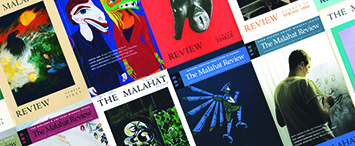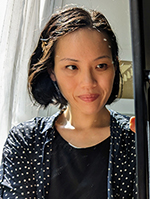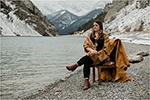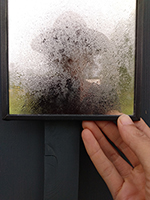|
|
submission guidelines

We welcome submissions of poetry, short fiction, and creative nonfiction, as well as translated work in any of these three genres, by new and established writers.
The best way to know what kinds of work we might publish is to order a print or digital issue or subscribe.
We read submissions from Canadian writers all year. Because we receive so many submissions, we accept work from international writers only during certain months, depending on the genre. We also run four contests per year and these have their own separate guidelines.
Head over to our submission guidelines page to learn more.
PW Jarungpiterah, issue #223 poetry contributor
 Past contributor Rhiannon Ng Cheng Hin talks with the issue #223 contributor about how memory plays into poetry and process, the narrow, hypnotic shape of PW’s poems, and the plotting and scheming involved in big projects. Past contributor Rhiannon Ng Cheng Hin talks with the issue #223 contributor about how memory plays into poetry and process, the narrow, hypnotic shape of PW’s poems, and the plotting and scheming involved in big projects.
RNCH: Your first poetry collection will be a lyrical family montage set in 1970s Thailand—can you speak more about your collection?
PWJ:
At the moment, my poetry collection chronicles the journey of a young girl through the shifting socio-political terrain of 1970s Thailand during the Cold War. Equal parts family album, still life, historical rescripting, and folkloric montage, these poems interweave the oneiric psyche of its protagonist with the manifest and spectral surfaces of daily life: a grandfather merges with a ghostly encounter; morning chores transform into a metaphysical fugue; a gecko assumes the role of house guardian; the contents of a woman’s vanity present an ominous self-portrait; a stranded tourist portends the death markings of a tarot card; a fish vendor recalls her past lives. Ultimately, my project provides a meditation on the thin veil that divides: domestic/spiritual, history/erasure, gender/non-self, and belonging/self-denial.
Read the rest of PW Jarungpiterah's interview & one of her poems.
Jaymie Campbell,
issue #223 cnf contributor
 Editor Iain Higgins talks with the issue #223 contributor about Jaymie’s relationship to the materials she uses, writing as a way to process beading work, and the perfect pieces that emerge from moments of imperfection. Editor Iain Higgins talks with the issue #223 contributor about Jaymie’s relationship to the materials she uses, writing as a way to process beading work, and the perfect pieces that emerge from moments of imperfection.
IH: The sense of conversation that emerges in “Beads Are the Best Conversationalists” is as rich as the word itself, whose web of meanings includes not just talking with others and ourselves, but also dwelling with them, moving with them. In other words, conversations involve us in relationships, reciprocity, responsibilities. What sort of conversations (with their attendant relationships, reciprocity, and responsibilities) would you like your beads and your writings to give rise to when they go out into the daylight world after being made in your nighttime workshop?
JC:
For me, this piece was a deep exploration of my spiritual connection to beadwork and about my ancestors. A nod, if you will, to the generational connection to beads and working with my hands that resonates deeply when I am in that space. It is an exploration of a different continuum of time, where the beads represent not only the possibilities and iterations of myself, but also all of those things for my ancestors, both past and present. I suppose that I have dual hope—I hope that the beads and the writings lead to important conversations about art, about being multi-faceted beings, about culture and ultimately about complicated issues like reconciliation and truth. In the same way, I hope they don’t lead to further labour for my kin. It’s a complicated space, but I always hope the daylight brings new perspectives.
Read the rest of Jaymie Campbell's interview.
Sadiqa de Meijer,
issue #223 cnf contributor
 Volunteer Joyce Chung talks with the issue #223 contributor about observation as an outsider, an affinity for aquatic insects, and a sense of belonging as a landing place. Volunteer Joyce Chung talks with the issue #223 contributor about observation as an outsider, an affinity for aquatic insects, and a sense of belonging as a landing place.
JC: "In the Field" follows your work as a biology student when you spend a summer venturing out mostly alone into a conservation area to "attempt an inventory of every species present within its bounds." You bring so much life and colour to the species, places, and processes described in your piece. Your attention to detail when writing about your focus of aquatic insects, which are often objects of disgust, is particularly unique. What draws you towards them?
SdM:
When I started the fieldwork that is the subject of the piece, I didn’t have an affinity for or particular knowledge of aquatic insects—the subject was assigned to me somewhat arbitrarily. But as I started to look at and read about them, I got intrigued. I think it’s an example of how our engagement changes according to the kind of attention that we bring to something. I was, before that study, probably as inclined as anyone to consider the insects only as appalling things to brush up against while swimming. Being obligated to ask, instead, what their species and behaviours and life cycles were, made them interesting. The essay explores some of the limits of a scientific inquiry, but it’s also true that being part of one channeled my attention in a manner that led to appreciation.
Read the rest of Sadiqa de Meijer's interview & an excerpt.
|
|
|
|
|
|
|
|
|
|
|
|